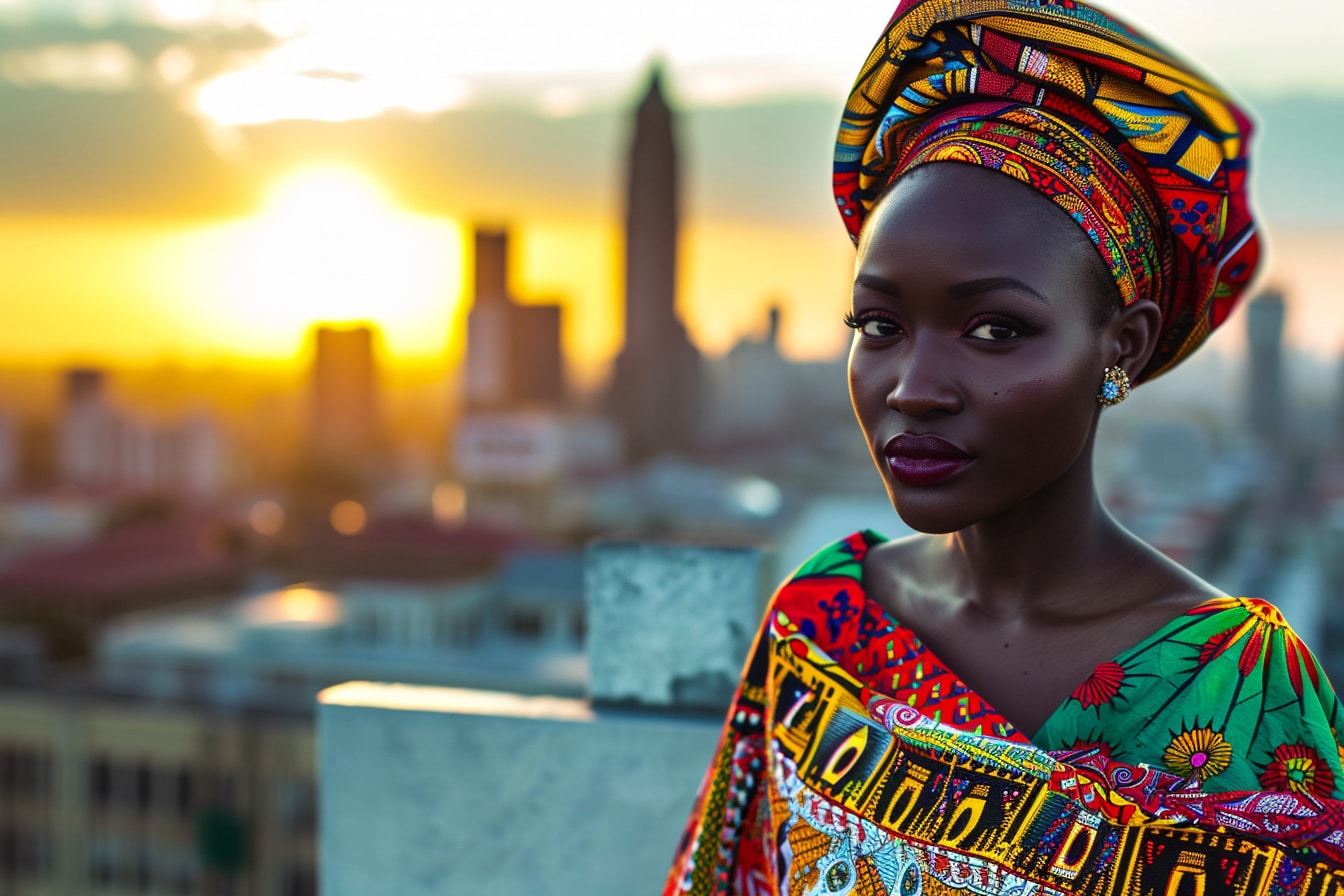African fashion is increasingly establishing itself as a major pole of attraction in the highly competitive world of haute couture, where originality and authenticity are becoming vectors of global interest. In honor of this rise to prominence, a series of specificevents consecrate the talent and creativity of the continent’s designers. These events serve as a springboard to introduce unique pieces from African know-how on prestigious catwalks. The emergence of exclusive fashion weeks, as well as high-profile participations in major international catwalks, symbolize the recognition of and interest in African fashion. Dedicated events and platforms testify to a clear desire to celebrate this rich aesthetic and give it the visibility it deserves, notably by answering the question of what place African fashion has on haute couture catwalks through the organization and curation of initiatives in its honor.

Fashion Weeks celebrate African fashion
Catwalks the world over are increasingly recognizing the richness and creativity of African fashion, dedicating major events to it, where shimmering fabrics and bold cuts captivate an international audience. Africa Fashion Week, for example, is a must-attend event for aficionados of Afropolitan style. These events take place in metropolises such as Lagos, Johannesburg and Nairobi, revealing ancestral fabrics magnified by a contemporary, modern touch.
Nurtured by a rich textile heritage – think colorful wax, delicate embroidery and meticulously crafted beads – these fashion weeks not only celebrate the talent of African designers, but also consecrate the growth of an industry that continues to evolve. Far from being a simple succession of fashion shows, these events are an opportunity for many talents to correspond with the sector’s oligarchs and forge fruitful business partnerships. The collections presented oscillate between respect for age-old traditions and avant-garde aspirations, witnessing the emergence on the scene of traditional hand-woven loincloths in a world that is transforming them into haute couture pieces.
Africa Fashion Week London and New York, in particular, have earned prestigious reputations over the years, providing an international showcase for this art of dress that fuses cultural identity with cosmopolitan influences. Through these temporary cathedrals of fabrics and patterns, these weeks celebrate the indomitable strength of a continent that cradles in its bosom a dynamism unparalleled in the global fashion universe.
The presence of African fashion at major international shows
Echoing Africa’s vibrant hues and captivating patterns on international catwalks, African fashion has been booming in recent years. Far from being an ephemeral trend, it has become an essential part of the haute couture landscape. Talented designers from this continent, the cradle of humanity, are making their mark at the most prestigious events in the fashion world, such as Paris Fashion Week, New York Fashion Week and Milan Fashion Week.
Creations inspired by African heritage are bursting onto the scene with audacity, showcasing the refinement of textiles such as bogolan and wax, sublimating tradition through a contemporary prism. Icons such as Imane Ayissi and Alphadi have transcended artistic and cultural boundaries to present collections that captivate an international audience. They bring a breath of fresh air through an aesthetic combining ancestral craftsmanship and avant-garde vision.
This increased presence is the result of a fruitful dialogue between different cultures and know-how: structured cuts embracing traditional African ornaments, an unlimited chromatic palette embracing exclusive fabrics from the continent – all contribute to this flourishing integration. It’s also thanks to this cross-fertilization of innovative ideas that some renowned European fashion houses are incorporating elements of African fashion into their own creations, demonstrating a mutual admiration that exceeds the singular expectations of those passionate about an authentic African wardrobe.
Dedicated events and platforms
In the teeming world of haute couture, African fashion has carved out a special place for itself over the years. Far from being confined to occasional participation in classic global fashion gatherings, it now flourishes within events and platforms specially designed to highlight its unique richness and diversity. These events are essential springboards for African designers, giving them international visibility and deserved recognition for African craftsmanship.
Capital cities such as Dakar, Lagos and Johannesburg become the stage for these flamboyant celebrations of cultural identity through fashion. Africa Fashion Week, for example, is a crossroads of excellence, attracting designers, models, investors and fashion enthusiasts to savor the latest trends from the four corners of the continent. During these prestigious events, the richness of fabrics such as wax and bogolan is showcased through innovative collections by top designers.
This phenomenon is not confined to African metropolises; it has also found an echo overseas, where diasporas are proudly embracing their heritage. As a result, initiatives such as “Black Fashion Week” are springing up, an event that transcends terrestrial borders to celebrate the global impact of this unclassifiable aesthetic on the international scene. What’s more, these gatherings often take on a holistic character, combining debates on sustainable development or the circular economy in the textile and clothing sector.
The rise of the Internet has also facilitated the emergence of unprecedented digital platforms dedicated largely or entirely to promoting African creativity in clothing, as well as African fashion events. From marketplaces to specialized webzines, not forgetting the vibrant social networks of a committed community: the web offers an unprecedented range for discovering and acquiring these pieces imbued with stylistic audacity and ingenuity.
We recommend these other pages:
- Is African fashion represented on international catwalks?
- Which haute couture designers have been inspired by African fashion?
- Is African fashion well received on haute couture catwalks?
- What challenges do African designers face on the haute couture catwalk?
- Which African garments are the most popular on haute couture catwalks?
